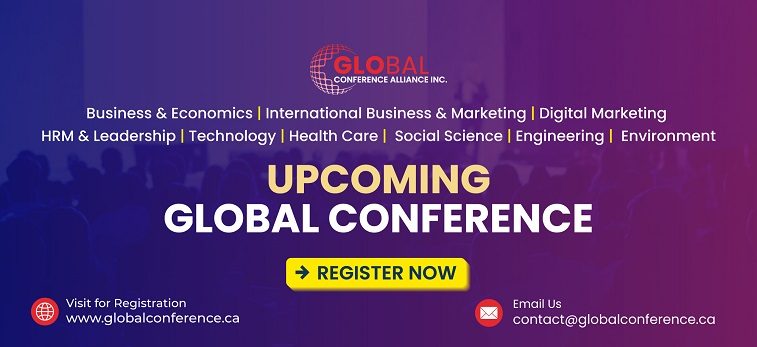Every event begins with a good start, and that’s why the first few words are so essential. When you welcome everyone at a larger event, such as an electrical engineering conference, the day can feel special and memorable. If you are worried about how to prepare the perfect welcome speech for electrical engineering conference, then you are in the right place.
To prepare a welcome speech for an electrical engineering conference, begin with a warm greeting and thank the attendees. State the event’s purpose, acknowledge special guests or speakers, and briefly outline the agenda. Highlight key sessions or innovations. Conclude by expressing gratitude once more and smoothly introduce the first speaker to officially begin the conference.
Do you want to know every step in detail? The following article will teach you everything you need to know about preparing the welcome speech for electrical engineering conference. So stay with us.
Welcome Speech for Electrical Engineering Conference
Welcome speeches are typically the first thing people hear at Electrical Engineering Conferences. It sets the mood and gives everyone an idea of what to expect. If done well, it makes the event feel more exciting and organized. Here’s how you can plan it step by step.

Step 1. Greet the Audience
Start with a warm, friendly hello. Thank everyone for joining and let them know how happy you are to welcome them. This creates a comfortable and open atmosphere. You might say something like, “It’s a great pleasure to have so many brilliant minds in electrical engineering gathered here today.”
Step 2. Say the Purpose
Next, briefly explain why the conference is taking place. Mention the main theme or focus, such as advancements in power systems, smart grids, or sustainable energy. Use simple, clear language to help everyone connect with the topic. For example: “Today, we come together to explore cutting-edge innovations shaping the future of electrical engineering.”
Step 3. Mention the Guests
If there are special guests, speakers, or dignitaries attending, acknowledge them by name and title if possible. A few kind words go a long way. You might say, “We are honored to have Dr. Smith, a pioneer in renewable energy systems, joining us today.” This makes guests feel appreciated and recognized.
Step 4. Discuss the Event
Give a small idea of what’s going to happen at the conference. For example, you can mention how upcoming conferences in Canada often include talks, fun activities, or group discussions. Don’t go into full detail—just give people a picture of what’s coming. This helps them know what to expect. Try to say it in an exciting way.
Step 5. Share a Positive Message
Offer an encouraging message to inspire collaboration and engagement. Simple words work best, such as: “Let’s use this opportunity to exchange ideas, ask questions, and grow together.” This helps set a positive tone for the entire conference.
Step 6. Keep It Short
Keep your speech to about 2–3 minutes. Avoid repeating points, and focus only on what’s meaningful. The goal is to welcome, not to lecture. A short and sincere speech has more impact than a long, complicated one.
Step 7. End With Thanks
Before closing, thank the attendees once more for being there. You might also thank the organizing committee or volunteers: “A special thanks to the team who made this conference possible through their dedication and hard work.”
Step 8. Invite the First Speaker
End by introducing the next part of the program. Use a smooth transition like, “Now, it’s my honor to welcome our keynote speaker, Dr. Lisa Patel, who will share insights into smart grid technologies.” Say it with enthusiasm to keep the energy up.
Who Steps Forward to Give a Welcome Speech for the Electrical Engineering Conference?
Every electrical engineering conference begins with a speaker taking the stage. This short speech helps begin the event in a nice and organized way. But who gives this speech? That depends on a few simple things. Keep reading to find out who usually speaks and why it matters.
Event Host
The host is often the first person to speak at the conference. They are in charge of running the event and making sure everything goes smoothly. Since they know the plan well, they’re a good choice to welcome everyone. They greet the guests, talk about the event, and start things off with a smile. Their job is to make everyone feel comfortable and ready for the day.
Chief Guest
Sometimes, a special guest is invited to begin the event. This person is usually someone important in the field of electrical engineering. They might be a scientist, a top engineer, or someone who has done great work. When they speak, people pay close attention because their words are respected. They help set a serious and exciting mood for the event.
Conference Organizer
The organizer is the person or team who planned the whole event. Since they worked hard behind the scenes, they often know everything about the schedule and the people involved. They may give the welcome speech to thank everyone for coming and explain what’s going to happen. It’s also a nice way for them to greet guests personally. People like hearing from the person who made it all possible.
Department Head
If the conference is held by a college or university, the head of the electrical engineering department might speak first. This person is usually a professor or a leader who supports the event. They welcome guests, talk about the importance of the event, and often say a few kind words to the students and speakers. Their speech shows that the event matters to the whole department. It helps add respect and meaning to the day.
Special Speaker
Welcome speeches are often given by well-known speakers. They could be an expert from another city or country, or someone known for smart ideas. These speakers bring excitement and interest right from the start. Their words can help everyone feel inspired and ready to learn more. It’s a fun way to begin the day with energy.
How to Involve The Audience In Your Welcome Speech?
Delivering a welcome speech is more than just speaking. It is about connecting with the audience as well. If the audience feels part of it, they will enjoy it more. But how do you make that happen in a simple way? Here are some easy and fun ways to involve everyone:
Ask Simple Questions
One easy way to bring the audience in is by asking them questions. You don’t need anything tricky—just something fun like, “Who’s excited to be here today?” When people raise their hands or laugh, it breaks the ice. It helps everyone feel like they’re part of the moment. This makes your speech feel more like a chat than a lesson.
Use Friendly Words
Speak like you would in a regular conversation. Say things like “we,” “us,” or “together” to include the audience in what you’re saying. It feels more natural and warm. People listen better when it sounds like you’re talking with them, not at them. It also keeps the mood light and easy.
Share a Fun Fact
You can share a fun or surprising fact about the topic or event. For example, something cool from the world of electrical inventions or famous engineers. People enjoy learning something new that they didn’t expect. It grabs their attention and keeps them interested. It’s a smart way to wake up the room a little!
Use Light Humor
A little joke or a funny line can go a long way. You don’t have to be a comedian—just say something simple that makes people smile. It could be about how hard it is to untangle wires or how coffee powers engineers. A laugh makes people feel relaxed and ready to listen. Just keep it clean and easy.
Look Around The Room
Don’t just stare at your paper or the screen. Look at different people while you speak. When you make eye contact, it feels like you’re talking to them directly. This makes people feel seen and included. It also helps you feel more confident.
Invite a Cheer or Clap
You can ask for a cheer or a round of applause at the end or during your speech. For example, say, “Let’s give a big clap to the amazing speakers today!” It lifts the mood and gets everyone active. People like being given a reason to respond. It also brings good energy to the room.
Is it Useful to Study Different Engineering Conference Welcome Speeches?
Yes, it is useful to study different engineering conference welcome speeches to build a better structure and speak more clearly. Reading a few speeches helps you understand what makes a good start and how to keep people interested. You can also see how speakers thank guests and explain the event’s purpose. These examples make it easier to write your own speech with confidence and ease.
Looking at other speeches shows you how to keep things short and simple without missing important parts. For example, a welcome speech for civil engineering conference may focus more on construction and new designs. Watching how others handle different topics helps you choose the right words for your own event. You also learn how to make your speech warm, friendly, and easy to follow.
Studying different speeches can help you avoid mistakes and make your message clearer. You notice what works and what feels boring. It helps you stay calm because you know what to say and how to say it. Learning from others is one of the easiest ways to prepare a strong and smart welcome speech.
Welcome Speech Example for Electrical Engineering Conference
Every conference starts with a welcome speech to help everyone feel comfortable and excited. A good speech also explains what the event is about. You might wonder how to say all the right things in a simple way. Read on for a clear example and some easy steps to help you write your own.
Welcome Speech Example 1: Short and Simple
Good morning, everyone!
It’s a great pleasure to welcome you all to this Electrical Engineering Conference. We’re excited to have talented minds, curious thinkers, and experts all under one roof today. Over the next sessions, we’ll explore new ideas, smart technologies, and real-world innovations. Thank you for being here, and let’s make this day inspiring and fun!
Welcome Speech Example 2: Friendly and Warm
Hello and welcome to all of you!
Today is a special day for everyone interested in electrical engineering. We’re here to share ideas, ask questions, and learn from each other. Whether you’re a guest, a speaker, or a learner, your presence adds value. Let’s begin this conference with curiosity, respect, and excitement for what’s ahead.
Welcome Speech Example 3: Formal Style
Good morning, respected guests, speakers, and fellow attendees.
It is my honor to welcome you to the Electrical Engineering Conference 2025. This event brings together bright minds and industry experts to discuss new challenges and smart solutions in the field. We are proud to host sessions that reflect the future of power, automation, and innovation. Thank you for joining us—let’s get started with purpose and pride.
Welcome Speech Example 4: For Students and Young Professionals
Hello everyone!
Welcome to this exciting event, all about electrical engineering! Today, we have experts sharing ideas and cool projects you won’t want to miss. Ask questions, take notes, and enjoy every session. We’re glad you’re here—let’s learn and grow together!
Welcome Speech Example 5: Opening With Energy
Good morning to all our amazing guests and participants!
We’re thrilled to open this year’s electrical engineering conference. From new ideas to game-changing tech, today’s event will cover it all. Get ready for talks, demos, and real conversations about the future of engineering. Let’s kick things off with energy and excitement—welcome aboard!
Mistakes to Avoid in a Welcome Speech for Electrical Engineering Conferences
Giving a welcome speech is a big moment, and it’s okay to feel nervous. But small mistakes can make your speech confusing or dull. The good news is, most of these mistakes are easy to fix. Keep reading to find out what to avoid and how to make your speech better.
Speaking Too Fast
When you’re nervous, it’s easy to talk too fast. But if you speak too quickly, people may not understand what you’re saying. Try to slow down and take short pauses. This helps the audience follow your words. It also makes you sound calm and clear.
Forgetting to Smile
A serious face can make your speech feel too dull or stiff. A simple smile helps people feel welcome and relaxed. It also makes you look more confident, even if you’re a little nervous inside. So don’t forget to smile now and then. It really does make a difference.
Skipping the Purpose
Some people jump right into names or events without saying why the conference is happening. That can confuse the audience. Always say a few lines about the purpose of the event. It helps people feel connected and understand what’s coming next. Keep it short and simple.
Ignoring the Guests
Not mentioning special guests or speakers can seem a bit rude. A quick thank-you or a warm welcome shows respect. You don’t need to say a lot—just enough to make them feel noticed. Guests are often an important part of the event. So, always remember to include them.
Talking Too Long
A welcome speech should be short and sweet. If you keep talking for too long, people may lose interest. Try to stay within two to three minutes. Cut out anything that sounds boring or repeated. Leave room for the main event to shine.
Utilizing Irrelevant Welcome Speeches
Using a welcome speech that doesn’t match the event can confuse the audience. For example, a welcome speech for academic conference wouldn’t fit well at an electrical engineering conference. Every event has its own style and topic, so your speech should match that. If the speech feels off-topic, people may stop paying attention. Always make sure your words fit the theme and purpose of the conference.
Using Big Words
Using long or hard-to-understand words can confuse your listeners. Try to speak in a way that’s clear and simple. It’s not about sounding smart—it’s about being understood. Easy words help more people enjoy your speech. Keep it real, not fancy.
No Clear Ending
Some people end their speech too quickly or without a proper closing. This makes the audience unsure of what’s next. Always thank the audience again and invite the first speaker. A smooth ending shows that you’re ready to move forward. It also makes your speech feel complete.
Frequently Asked Questions
Welcome speeches may seem short, but preparing one for an Electrical Engineering Conference involves many small details. You might have questions about how to sound clear, when to practice, or how to connect better with your audience. This section answers common questions people often ask when preparing for a conference speech.
How Early Should You Start Practicing Your Electrical Engineering Conference Welcome Speech?
It’s best to start practicing your engineering conference welcome speech at least a week before the event. This gives you enough time to feel confident and make changes if something sounds off. The more you practice, the more natural your words will feel. Practicing early also helps you remember key points without needing to read everything word for word.
Should You Use a Microphone for Your Welcome Speech?
Yes, using a microphone is a good idea, especially in large halls or crowded spaces. It helps make sure everyone hears you clearly without you needing to shout. A microphone also lets you speak at a calm pace and use your voice in a natural way. Always test it before your speech to avoid sound issues.
What Should You Wear While Giving a Welcome Speech?
Your clothes should look neat and fit the type of event you’re speaking at. For an Electrical Engineering Conference, smart casual or formal wear is usually a good choice. You don’t have to dress too fancy, but avoid anything too casual or distracting. Looking put-together helps you feel more confident and respected.
Can You Use Notes During Your Engineering Conference Welcome Speech?
Yes, you can use small notes to help remember your points. It’s better to glance at notes than forget what you want to say. Just avoid reading your speech word for word. Keep your notes simple with short points to guide you as you speak.
What Should You Do If You Forget a Line?
If you forget a line during your speech, pause and take a deep breath. It’s okay—most people won’t even notice. Try to move on to the next point or say something close to what you meant. Staying calm and smiling helps you recover smoothly.
Is It Okay to Add a Personal Story?
Yes, a short personal story can make your speech more interesting and easier to connect with. It helps the audience see the real person behind the microphone. Just make sure the story fits the topic and isn’t too long. A quick story with a clear point works best.
How Can You Make Your Speech Sound Natural?
The best way to sound natural is to speak like you’re talking to a friend. Use easy words and short sentences. Avoid trying to sound too serious or formal. Practice out loud so your voice flows smoothly when you’re speaking to the audience.
What Time of the Day Is Best for a Welcome Speech?
A welcome speech is usually given at the very start of the event, often in the morning. This sets the mood and tells everyone what to expect. It helps people feel settled and ready for the sessions ahead. Being first means your energy really matters—keep it warm and upbeat.
Should You Mention the Audience’s Role?
Yes, mentioning the audience’s role makes them feel included and important. You can say something like, “Your presence today adds value to this event.” This shows respect and reminds everyone they are part of something meaningful. It helps build a good connection from the start.
Can Humor Be Used in a Welcome Speech?
Yes, light humor is a great way to relax the room and make people smile. A small joke or funny comment (not too silly) helps everyone feel more at ease. Just make sure it’s clean, kind, and fits the event. Humor works best when it feels natural, not forced.
Bottom Line
A great welcome speech can turn a regular conference into a memorable experience. It’s your chance to set the mood, connect with the audience, and show what the day is all about. Whether you’re speaking to guests, students, or experts, your words matter.
Preparing the right welcome speech for electrical engineering conference doesn’t have to be difficult. With a few friendly lines, a clear structure, and a little practice, anyone can do it. Just remember to keep it real, respectful, and full of energy.
The first words you say can shape the whole event. So take a deep breath, smile, and speak with confidence. Let your welcome speech be the spark that lights up the day!






